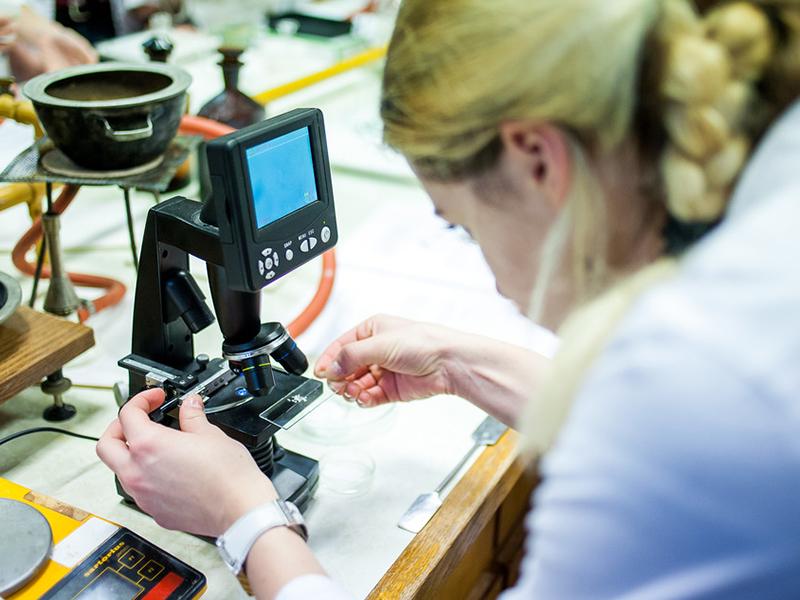The traditional structure of medical education is based on the Flexner Report of 1910; former schoolteacher Abraham Flexner is credited with creating the framework for theoretical and practical medical education.
Flexner’s study argued for a curricular structure that rested on the knowledge of the basic sciences, followed by clinical training. By the 21st century, though, this methodology had outlived its time. The focus of healthcare has shifted from curing disease to preventing it and preserving health. The paternalistic approach and the anecdotal methodology have been replaced by evidence-based medicine that ensures effectiveness and safety. Training is increasingly student-centred, with an emphasis on active learning and the acquisition and assessment of clinical competence.
- Home labs and simulations to spark curiosity and exploration
- Only a digital drive will allow us to capture the boom in STEM interest
- Start with why, part one: taking a new approach to curriculum development
The challenges of our age necessitate substantive revision of the original concept, so theoretical and clinical knowledge are transferred in a way that is both organic and integrated. This can be achieved in several ways and at different levels, as curriculum reform at Semmelweis University has shown.
Complementary curriculum models for medical education
At its core, the Flexner curriculum model focused on the instructor, who imparted knowledge that included standard and rigid curricula. As a counterpoint to this, in 1984 R. M. Harden created the Spices curriculum model. The acronym captures the essence of the model: student-centred, problem-based, integrated, community-based, builds on electives, and is systematic.
Although the shift in medical education since then has clearly been in the direction of Harden’s model, nevertheless, today’s programmes typically contain elements of both the Flexnerian and Hardenian concepts. Semmelweis University, when it significantly renewed its curriculum in 2019-20 (in the 250th year of its foundation), chose to take the same path, combining the conservative training tradition with significant innovative elements, placing the focus on practical education. The Covid pandemic also accelerated the adoption of modern educational methods.
The overarching logic of the subjects remained the same in the curriculum, but medical training became more efficient. Theory and clinical practice in the two main phases of training remained dominant. Most of the innovations in the new curriculum are in the clinical module, as it is taught in a block system. Each subject includes both theoretical and practical elements in its own block, followed by an exam. Practicals essentially involve shadowing lecturers all day in small groups.
Theoretical (foundational) and practical (applied) knowledge is linked by preclinical, translational subjects (such as pathology, pharmacology and translational medicine), which play a key role in the new curriculum, in particular in ensuring that theoretical knowledge is durable and easily applicable to clinical studies and later to medical practice.
For example, one of the most important translational/preclinical subjects, pharmacology, which is the bridge between theoretical and clinical knowledge, has been divided into two interlinked subjects: basic pharmacology in the preclinical module and clinical pharmacology in the clinical module. Basic pharmacology reflects more elements of the Flexnerian concept, while clinical pharmacology reflects more elements of the Hardenian concept (taught in blocks, more student-centred, based on more problem-oriented methods, discussion of case studies and group work, for example). The new method results in a more complex knowledge of pharmacology and pharmacotherapeutic options, always adapted to the current level of knowledge and focus in medical training: from theoretical knowledge of diseases and possible drug targets to complex drug therapy for real patients. This latter aspect is extended/strengthened by moving into the specific clinical topic/subject block.
Integrated knowledge transfer
Ensuring an integrated transfer of knowledge and appropriate level of integration is a crucial aspect of modern and effective medical education, which has levels of integration based on the Hardenian “ladder”.
- non-integration or total isolation: a subject does not take into account the curriculum of other subjects
- awareness: being familiar with each other’s curriculum
- harmonisation: communicating with each other to harmonise the material of the subjects taught separately
- nesting: integrating parts of the curriculum into each other’s courses
- temporal coordination: the teaching of similar subjects is coordinated in a timely manner
- sharing (or joint teaching): developing common, closely related themes
- correlation: the introduction of an integrated teaching phase in subject-based education
- complementary programming: the definition of a theme to which several subjects contribute
- multidisciplinarity: identifying specific topics and problems that are approached in a multidisciplinary way
- interdisciplinarity: further integration of the previous point
- transdisciplinary: an integrated curriculum that leads to knowledge acquisition with a focus on clinical problems.
Directions for integration
Horizontal integration takes place between subjects that are taught during the same period of training, while vertical integration extends across different periods. A special form of this is the Z-shaped curriculum model, in which the theoretical dominance of the foundation years is maintained, but the first elements of clinical training are already present, and theoretical elements return during the later years of clinical dominance. Spiral integration, on the other hand, is a complex implementation of the full horizontal and vertical integration, in which theoretical and clinical knowledge are imparted in parallel throughout the training period.
Vertical integration is critical for converting theoretical knowledge into clinical competences, and it may be desirable to establish a recurring mechanism at the university whereby lecturers of thematically related theoretical and clinical subjects coordinate their curricula. With the help of such continuous feedback, the basic subjects can focus on relevant information in the theoretical training leading to improved competences of medical students.
Following the traditional model, the renewed curriculum of Semmelweis University is based on theoretical (first two years), pre-clinical (third year) and clinical (years four to six) phases, while the aforementioned Z-shaped model appears in several elements of the training.
This is also of great importance for the mental health of medical students, which is more at risk than before because of the challenges of our times. Repeated, well-organised patient encounters and the presentation of clinical aspects during the theoretical years can help to reduce this risk. It is also important to deepen vertical integration in order to replicate previously learned theoretical aspects in the clinical setting because the evidence-based medicine of our time requires a continuous, critical scientific approach.
In my experience, it is essential that we preserve tradition and respond to the challenges of the times as quickly as possible, if this is necessary to improve our medical education. There is no superior teaching system or methodology; we need quality standards and enthusiastic, highly motivated teachers, and students must be placed at the centre of medical education.
Curricular reform, which nowadays usually entails integration, could easily lead to a situation where theoretical knowledge is relegated to the background in the clinical years. Vertical integration in both directions, however, completes the process, by which the theoretical knowledge becomes durable, deepened and easily applicable to students in their clinical studies and medical practice.
László Köles is a lecturer at the department of oral biology in the Faculty of Dentistry, and at the department of pharmacology and pharmacotherapy in the Faculty of Medicine at Semmelweis University in Budapest, Hungary.
If you would like advice and insight from academics and university staff delivered direct to your inbox each week, sign up for the Campus newsletter.




comment